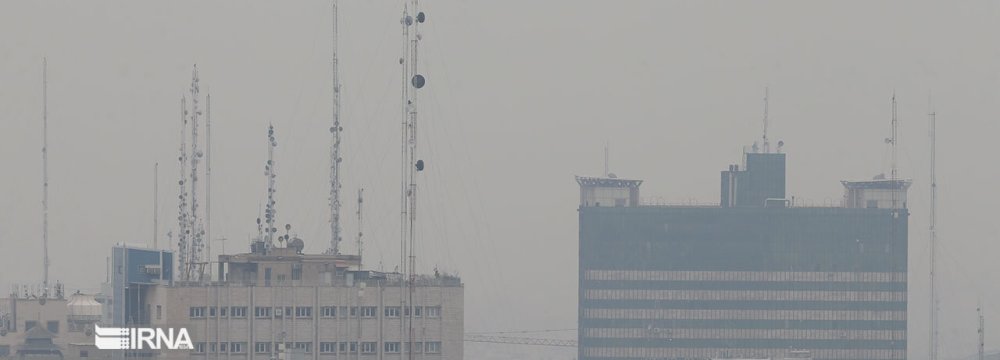For the 8th consecutive day, Tehran was engulfed by hazardous airborne pollutants as the Air Quality Index hit the red zone and surged to an average of 165 on a scale of 500 on Wednesday, unhealthy for all groups.
Tehran Air Quality Control Company has issued red alerts in as many as 25 stations throughout the capital, ISNA reported.
PM 2.5 levels hit 194 micrograms per cubic meter in district 19, the worst-hit region in Tehran. PM 2.5 are lung-damaging particulate matters that are 2.5 microns or less in diameter.
Every winter, cold temperatures and calm winds trap pollutants near ground and disrupt everyday life in Tehran and other metropolises throughout the country. From the northwestern Tabriz and the southwestern Ahwaz to the northeastern Mashhad and central Isfahan, all have reported high levels of pollutants in the past days and weeks.
The adverse conditions are likely to persist until at least Thursday.
For the past week, all schools in the capital have switched to online learning to curb the pollution and minimize the exposure of children to the dangerous particles.
Universities also moved classes online on Wednesday and Thursday. Private cars have been banned from entering city center to reduce pollution.
Ambulances have been placed in main city squares to assist individuals affected by the severely high levels of air pollution.
Head of Tehran’s emergency services, Saleh Tabari, announced that between December 2 to 9, there were 7,303 ambulance dispatches related to heart problems and 1,283 due to respiratory issues. Some 1,200 required hospital care and were transferred to medical centers.
Thousands of Iranians die from toxic smog every year. A recent report by the parliament stated that air pollution costs the country $7-11 billion a year.
According to one lawmaker, the high figures have been left unnoticed since they are indirect costs.
The number of days categorized as “unhealthy”, based on AQI, have doubled compared to the previous year.
The devastating air pollution has been linked to mismanagement by authorities and changes in the climate that have drastically reduced rainfall in autumn.
You are here
December 14, 2022 19:01
0
Tehran on Red Smog Alert
You can also read ...
Subscribe to our daily newsletter.
More from DEN Media Group:
© Financial Tribune Daily and Contributors 2014-2018









Add new comment
Read our comment policy before posting your viewpoints